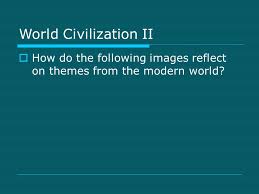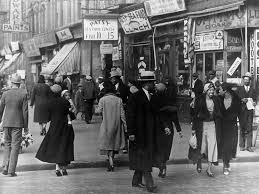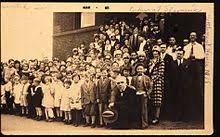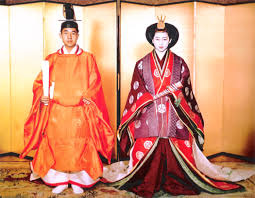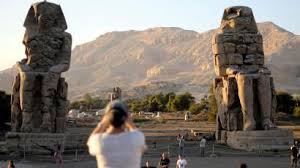
Visiting Local Historical Site
Order Instructions:
For this assignment, you will visit a local historical site and write a brief (1000 words) paper about it. Your paper should provide a description of the site you are visiting, a historical narrative of the site (i.e., what happened there – was a famous person born there? Was it important during some historical period?), and provide historical context for why the site is important enough to be preserved. In order to provide historical context, you should be able to relate it to important class concepts that you may find in lectures, the textbook, or other readings. No outside research is necessary for this assignment, although if you decide to use information from outside lecture and/or the textbook you should cite it. If you are writing about a recent landmark (created/relevant after 1940), you might want to read ahead.
SAMPLE ANSWER
Visiting Local Historical Site
This paper provides a historical narrative of the Adobe Avila, the historical significance of the adobe and the manner in which it turned out to be a historical monument. The Avila Adobe is attached to various historical happenings, and marks different economic, political, and social changes in the California from the nineteenth century up to the 20th century.
The Avila Adobe is a historical residence built by Francisco Jose Avila in 1818. It is characterized as the oldest standing residence in Los Angeles. Francisco Avila died in 1832, after which his second wife and their two children continued to live in the house. The house has been registered as California Historical Landmark. The house has its location in the paseo of historical Olvera Street, which is part of a California State Historic Park known as Los Angeles Plaza Historic District. The whole historic district is listed as a Los Angeles Historic-Cultural Monument as well as in the National Register of Historic Places (Office of Historic Preservation).
In 1846, the U.S. declared war on Mexico, whereby the U.S. took control of Alta California. On July 14, 1846, U.S. Navy Commodore landed at Monterey and declared victory over California. The Commodore Robert F. Stockton proceeded to Los Angeles where he declared the city as won over without much struggle. However, the Pueblo de Los Angeles did not capitulate easily and they revolted against the U. S. Navy, which ultimately led them to win the Siege of Los Angeles. In October, the Commodore was compelled to return to the U.S. through San Diego. Following the loss of the Battle of San Pasqual, the Navy moved back toward Los Angeles, whereby they participated in the Battle of Rio San Gabriel in January 1847. Stockton and his team managed to quell the Mexican resistance after two days in the battle, after which they entered the Battle of Mesa.
The news of the advancing U.S. troops resulted to many inhabitants in Pueblo, including Maria Encarnacion, flying away to other places to seek refuge. Encarnacion Avila’s husband had died and she did not have a man to protect her family, so she moved to stay with a nearby relative, leaving her house in the control of a young boy. The young boy had been instructed to ensure that the shutters and the doors were closed. On January 10, 1847, the U.S. troops landed at Pueblo with a marching band fanfare, luring the boy in charge of the Avila Adobe to open the doors. The troops were drawn to the house because of its spaciousness as well as lavish furnishings. Accordingly, they decided to use the Villa as temporary headquarters. Following the end of the hostilities a few weeks later after the signing of the Treaty of Cahuenga, the troops ended up vacating the house (Kielbasa, J. R. Avila Adobe).
In 1850, Avila’s youngest daughter, Francisca, got married to a German native called Theodore Rimpau. Following the death of Encarnacion in 1855, Francisca and her husband stayed in the house up to 1868. The house had grown so old in structure which made the Rimpaus to vacate it. Over the following few years, various family members rented the house. It later turned into a boarding house. An earthquake occurred in 1870, which caused more damage to the structure and caused the house to fall into ruins. Consequently, it was condemned by the City of Los Angeles in 1928 (Office of Historic Preservation).
During the early twentieth century, an English woman called Christine Sterling moved to Los Angeles and immediately took interest in the cultural history of the city. In 1926, Sterling started working on the project to transform the skid row ruin of the old plaza area into a Latin-American cultural center. She sought out the assistance of the Los Angeles Times owner and publisher, Harry Chandler, who produced various articles for purposes of generating public attention to the project and raising funds for restoration. Nevertheless, after two years, the funding recorded miserable failure. Despite the fact that Sterling encountered overwhelming chances and even seemed to lose the cause, when she became aware of the 1928 condemnation of the house, she acted promptly to have an impact on the wrecking ball. After tracking down the ownership of the house, she found out that Miss Sophia Rimpau was the owner, who agreed to rent it to Sterling for a nominal amount. Sterling then called out news reporters to cover a story about the restoration of the adobe and Olvera Street. Through the campaign, Sterling obtained great support and she raised enough funds to purchase the adobe (El Pueblo De Los Angeles).
Florence Dodson de Shoneman was one of Sterling’s benefactors. He was charged with providing furnishings for one whole room in the adobe. Sterling saw to it that necessary renovations were undertaken in order to save the adobe from being demolished. She also went to plead with the city council to rescind the order to demolish the adobe. In addition to the council fulfilling Sterling’s request, the chief of police also extended his help by sending prison inmates to assist in cleaning up the plaza area. The Avila Adobe eventually got restored to its original glory. By March 1930, several transformations had happened to Olvera Street that it was no longer a skid row but a Mexican-style marketplace (Office of Historic Preservation).
Christine Sterling continued to reside in the adobe, although she made it open for student and group tours. The adobe was acquired by the State of California in 1953 and included in the El Publo de Los Angeles Historic Park. Sterling maintained her residence until her demise in 1963. The adobe sustained several major damages following the 1971 Sylmar earthquake. The city council closed the house in the bid to achieve a five-year, $120,00o restoration plan. A memorial of Christine Sterling was set up at the rear of the adobe. Up to date, the adobe has been open to tours since 1976.
The Avila Adobe house is now a historic house museum. From the large house it used to be, it now only has seven rooms left. Through restoration, it has been possible to come up with an idea of what the original house used to look like. The family room was the largest, with a general area for social gathering, entertainment and dining. The major business hub was Francisco’s office room. The living room was a spacious room reserved for special occurrences such as baptism or wedding. The other rooms included a kitchen, a sleeping quarter for the parents and another for their daughters. The courtyard was used for cooking, while sanitation was also outdoors. Most of the original adobe’s furnishings were outsourced from countries involved in Avila trading (Estrada, 2009). When I visited the site, noticed that the structural walls of the adobe were comprised of sun baked adobe brick, with a thickness of about 2 feet. The adobe was surrounded by shops and restaurants to serve the neighborhood, and many people walked around Olvera Street. Amusing and exciting Mexican songs could be heard in the neighborhood. Tourists were served food with a great Mexican smell. Candles in the adobe also had a Mexican scent. At the time I got into the adobe, it was slightly humid and dark, and I could feel particles of dust flowing through my nostrils.
References
El Pueblo De Los Angeles. Historical Monument: Avila Adobe/ Visitor’s Center. Retrieved from: http://elpueblo.lacity.org/SightsSounds/HistoricStructures/TheAvilaAdobe/index.htm
Estrada, W. D. (2009). The Los Angeles plaza: Sacred and contested space. University of Texas Press.
Kielbasa, J. R. Avila Adobe. Historic Adobes of Los Angeles County.
Office of Historic Preservation: Avila Adobe. Retrieved from: http://ohp.parks.ca.gov/ListedResources/Detail/145
We can write this or a similar paper for you! Simply fill the order form!







